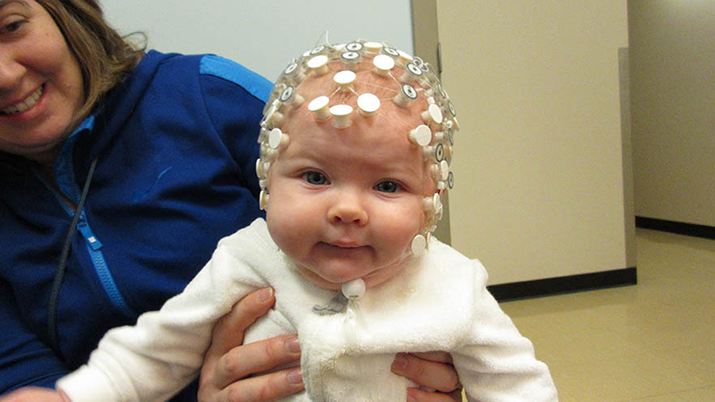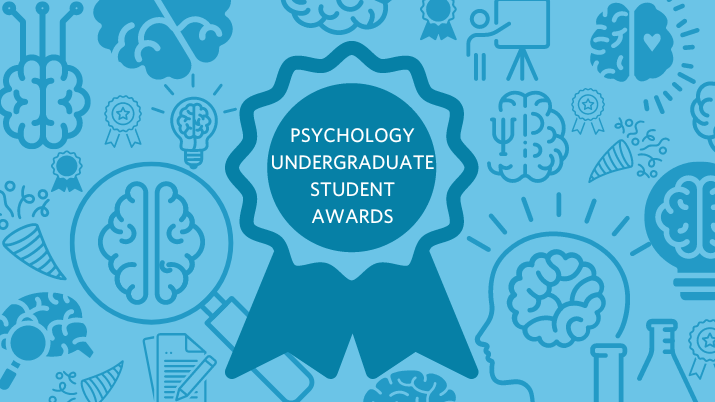

A baby study participant wearing an EEG cap in Dr. Janet Werker’s Infant Studies Centre.
New research from UBC’s department of psychology is the first to measure how the learning process unfolds in real-time in the infant brain.
The researchers used electroencephalography (EEG) to study how young infants use statistical learning to learn new words. They examined how babies’ brain responses track and align with the sounds of speech—a process known as neural entrainment.
They found that infants’ neural entrainment response shifted from the rate of the individual syllables to the embedded words in a continuous stream of speech that infants extracted and learned. This showed that infants rapidly discover which syllables make up words by using only the statistical properties between the syllables.
This neural measure of learning predicted the infants’ preference to either the words that were embedded in the stream or the non-words when tested after learning; stronger entrainment during learning correlated with infants’ preference to hear the new words.
Dr. Dawoon Choi, a recent PhD graduate working with Dr. Janet Werker in UBC’s Infant Studies Centre, is the lead author of the study Preverbal Infants Discover Statistical Word Patterns at Similar Rates as Adults: Evidence From Neural Entrainment.
“We found that the rate of learning hidden word-like structure in speech is similar between infants and adults, suggesting that the ability to learn from speech patterns in the environment emerges early in development and is maintained throughout life.”
Choi joins us for a Q&A, where she shares more about this research and how it can shape the way we learn.
What is this study about?
Statistical learning—the ability to learn from patterns and structures in the environment—has long been considered to be an important learning mechanism for infants during language acquisition. In particular, for breaking into natural speech and learning the first words. To better understand how infants learn and capture structures in the language that they are hearing, we used EEG to understand how infants learn these structures in real-time. This is a more sensitive way to study learning during development. We could then ask whether the mechanisms underlying statistical learning are maintained or change across the lifespan by comparing infants and adults.
How did you conduct this research?
We conducted a neuroimaging study with a group of 6-month-old infants using electroencephalography (EEG) and measured how the neural activity changed as learning unfolded. Specifically, we used the neural entrainment between brain rhythms and speech to index learning. Then we measured the learning outcome behaviourally. The behavioural measure relied on how long infants looked while listening to words vs. non-words. The idea behind the behavioural test is that if infants learned the words then they would respond differently to words compared to other non-word trisyllabic structures. We were also able to better understand this behavioural measure by looking at its relationship to the neural entrainment response during real-time learning.
How could this research shape the way we learn?
When we compared learning in infants and adults, we found that both groups actually learned at a similar pace. This finding suggests that even though the infants’ brains are still maturing, they are just as good learners as adults at using the patterns in the environment to learn important structures of their language, such as words. Even though there are many differences in learning across the lifespan, one aspect of learning that may show a relatively strong continuity is statistical learning. Our research shows that this ability to extract statistical patterns emerges from very early in life and can help us learn from our environment throughout life, beginning from learning our native speech.
This study, recently published in Psychological Science, was co-authored with Dr. Laura Batterink (UWO), Dr. Alexis Black (UBC), Dr. Ken Paller, (Northwestern University), and Dr. Janet Werker (UBC).


